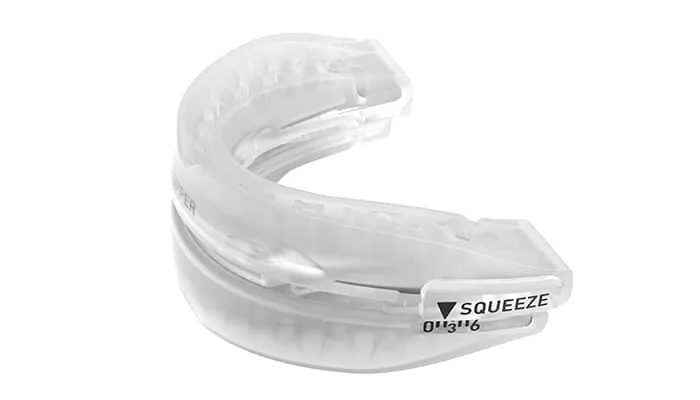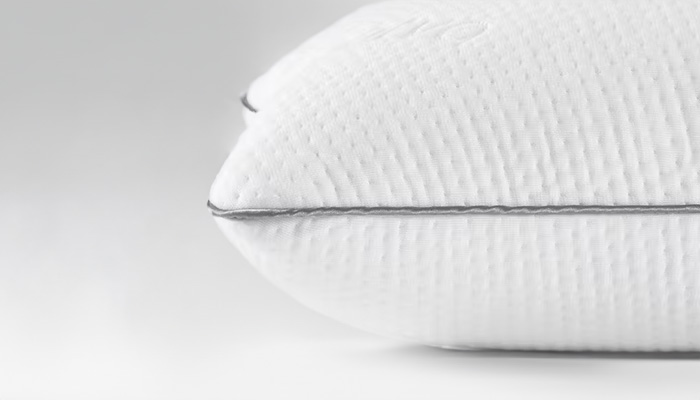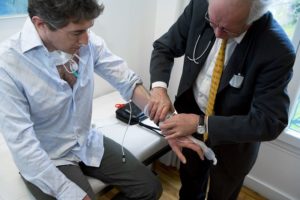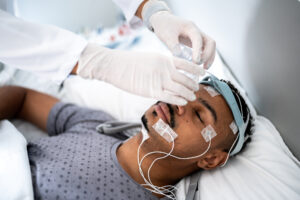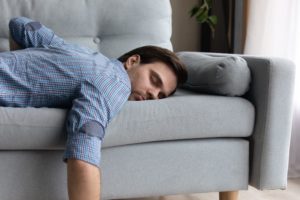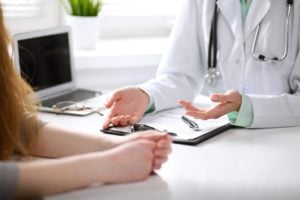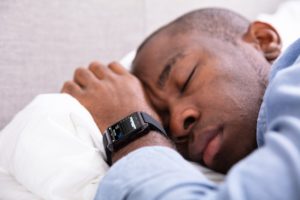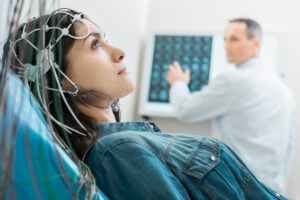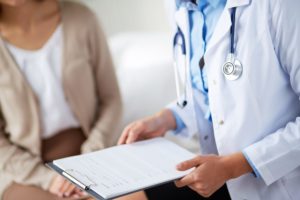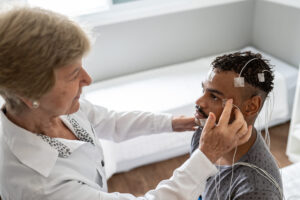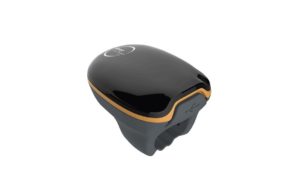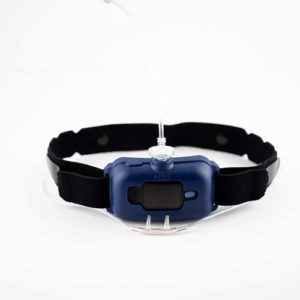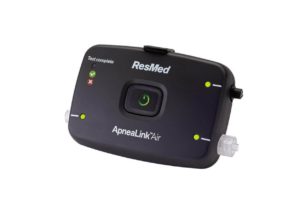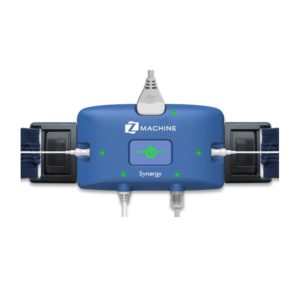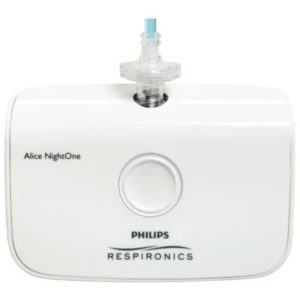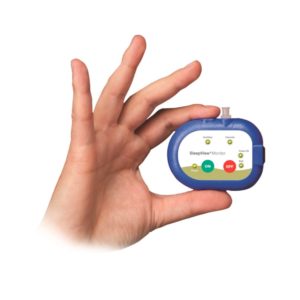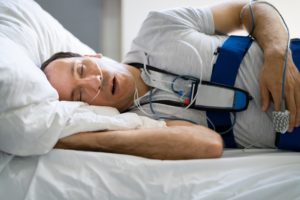When you buy through our links, we may earn a commission. Products or services may be offered by an affiliated entity. Learn more.
What Is an At-Home Sleep Study?
Learn how a home sleep study works and whether it's right for you
Does snoring keep you or your partner up at night? Do you wake up repeatedly, or wake up tired, with a dry mouth, sore throat, or headache? These are all possible signs of sleep apnea, a potentially serious sleep disorder that happens when your breathing is disrupted while you’re asleep.
If you think you might have sleep apnea, there’s a way for you to check for it at home. To see if a home sleep test (also known as a home sleep study) might be right for you, keep reading to find out more about what they are, how they work, and what they can and cannot do.
Our Recommended At-Home Sleep Apnea Test
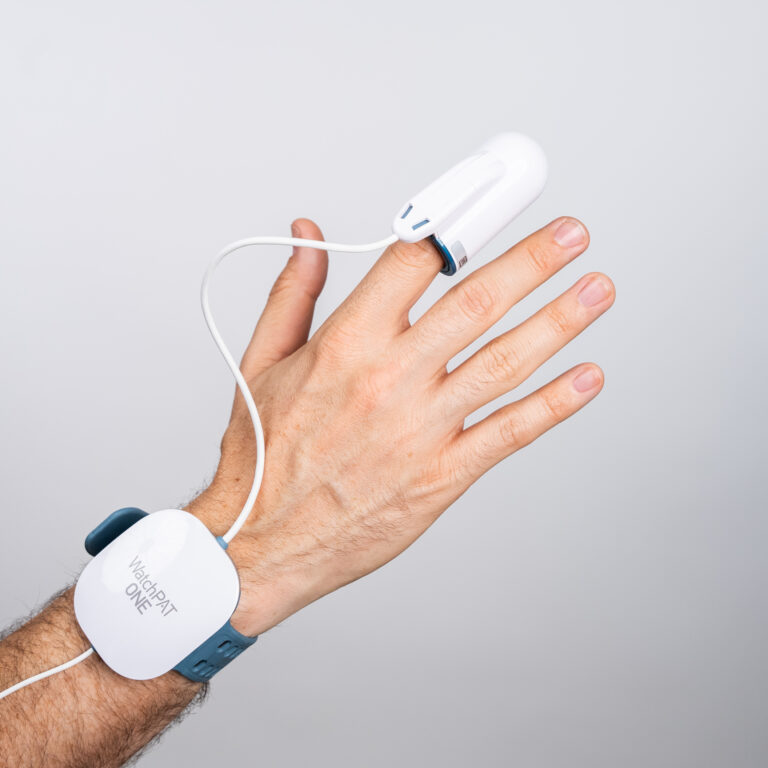
our partner at sleepdoctor.com
45% off a Home Sleep Test
Shop Now“Truly grateful for this home sleep test. Fair pricing and improved my sleep!”
Dawn G. – Verified Tester
What Is an At-Home Sleep Test?
A home sleep apnea test (HSAT or HST) is an affordable and convenient overnight test that you take from the comfort of your own home. This type of test can accurately diagnose obstructive sleep apnea in some, but not all, people.
Sleep tests are categorized by how much and what type of data they collect. Type 1 and 2 tests collect more detailed data (sleep lab or hospital-based polysomnography is a type 1 sleep test). Home sleep tests are generally type 3 or 4 tests because they collect less data and and are not capable of identifying patterns of sleep versus wake.
The equipment you’ll receive for your home sleep test depends on the type of test your medical provider orders, and it may include all or some of the following in the list below.
- Nasal breathing sensor: These tubes are placed in your nostrils and wrapped behind your ears. They analyze breathing patterns by tracking air pressure from inhaling and exhaling.
- Effort belt: This is less common in home tests, but it’s a band that goes around your chest to measure movement associated with breathing. Data from this device can help differentiate between obstructive sleep apnea, where you’re making an effort to breathe, and central sleep apnea, where your brain does not send the signal to inhale and exhale.
- Pulse oximeter: This device is usually placed over a fingertip to measure how much oxygen is in the blood.
- Microphone: Generally, the nasal breathing sensor estimates snoring, but sometimes an actual microphone is used to measure snoring. A sound sensor attached to the neck can also record sound and pressure.
- Data collection device: All of the sensors typically connect to the data collection device, either via wires or flexible tubes. This device may feature buttons you are instructed to push when you want data collection to begin and end, as well as status lights to indicate the device is on and recording.
How Does a Home Sleep Test Work?
The process generally involves five steps: Meeting with a medical professional, getting the equipment, doing the test, returning the equipment, then meeting again to discuss your results.
1. Schedule a visit with a care provider. A prescription is required to get a home sleep test, so if you are experiencing symptoms of OSA, make an appointment with your provider. Many home sleep test companies offer virtual consultations for this purpose as well. If the provider thinks you could have sleep apnea, they will either prescribe you a home sleep test or refer you to a sleep specialist or sleep clinic.
2. Get your home sleep test. Once you have your prescription, depending on the device, it will either be mailed to you or you will need pick it up at a sleep lab or clinic. When you get the equipment, your provider will walk you through how to use it.
3. Take the test. Once you have the equipment, follow the instructions to put on any sensors required by the test. Try to go to sleep and wake up at your normal times and avoid caffeine and alcohol, as they can affect your sleep. If you usually take sleep medications, ask your doctor if it is appropriate to take them the night of the test.
4. Return your equipment. Unless you have a disposable test (like the WatchPAT One), bring or send the test back to the location predetermined by your provider. Once the clinic receives the equipment, they will download and analyze the collected data.
5. Await your results. Once the data has been analyzed, your doctor or sleep specialist will discuss the results with you. They might give you a sleep apnea diagnosis and prescribe treatment such as a continuous positive airway pressure (CPAP) machine. Alternatively, they might inform you that your results were negative or inconclusive and ask that you undergo an in-lab sleep study.
What Does a Home Sleep Test Measure?
The metrics collected by a home sleep apnea test depend on the test type. To qualify as a type 3 test, a HSAT must measure:
- Two breathing-related measures, such as airflow and breathing effort
- Blood oxygen level
- One heart-related measure, like heart rate
Type 4 tests collect one or two measures, which may include:
- Airflow
- Blood oxygen level
- Heart rate
Other measurements, like snoring frequency, volume, and body movement, may also be collected.
Recommended Products for Sleep Apnea
From Our Partners at SleepDoctor.com
Which Sleep Test Is Right for You?
Home sleep tests are only used to diagnose sleep-disordered breathing issues, like sleep apnea. In-lab sleep studies can help diagnose other sleep disorders, like narcolepsy and periodic limb movement disorders. The difference is in what the test measures. Though both usually measure airflow, blood oxygen levels, and heart rate, only in-lab sleep studies measure sleep by monitoring brain activity.
People often prefer a home sleep study to an in-lab study because they are less expensive and don’t require traveling to a sleep lab. A home test also involves fewer sensors attached to you as you sleep, so it may feel less invasive.
If you have a relatively straightforward case of suspected moderate or severe sleep apnea and no other health conditions, then a home sleep apnea test might be right for you. If you or your doctor have any reason to believe you need a more comprehensive test, then it might be worthwhile to skip the home test and go directly to the sleep lab, as results of a home sleep test may indicate further testing is needed.

Frequently Asked Questions
How much do home sleep studies cost?
The cost of most home sleep apnea testing in the U.S. falls between $150 to $500. Often, health insurance covers some or all of the cost. You may need to pay the insurance deductible if you have not already.
How accurate are home sleep apnea tests?
Type 3 home sleep apnea tests are highly accurate at detecting sleep apnea in people considered likely to have a moderate or severe form. The test becomes less accurate for people with mild cases of obstructive sleep apnea and may necessitate further testing in a clinical setting.
How many times can I take an at-home sleep apnea test?
Generally, people only take a home sleep apnea test once. If that test is not enough to diagnose obstructive sleep apnea, they may be advised to do an in-lab, overnight sleep study.
What sleep disorders can home tests detect?
Home sleep apnea testing is commonly used to detect sleep-disordered breathing problems, like obstructive sleep apnea. Since existing home tests rarely measure brain waves, they are typically not capable of diagnosing other sleep disorders.
Will insurance pay for home sleep apnea studies?
Many health insurance plans cover home sleep apnea tests. The amount of coverage depends on the insurance company and the medical provider. Medicare Part B, for example, requires people to pay for a portion of study costs as well as the deductible, if applicable. To be covered by insurance, a test generally needs to be prescribed by a sleep specialist. You may want to confirm that your specific test falls under your insurance coverage before taking it.
Who should not take a home sleep study?
Although a home sleep test is useful for many people who may have obstructive sleep apnea, a home sleep study may also be less accurate at detecting mild sleep apnea symptoms. Experts recommend an in-lab sleep study rather than a home study for people who are suspected to have congestive heart failure, severe or chronic pulmonary disease, or neurological or neuromuscular disorders. Individuals who are suspected to have other sleep disorders, like narcolepsy, parasomnias, or periodic limb movement disorder, should also consider an in-lab study.
Is there a downside to home sleep testing?
For most people, the biggest risk of a home sleep apnea test is the potential for being misdiagnosed as not having obstructive sleep apnea when they actually have it, or as having a milder version than they actually do. For this reason, doctors often order an in-lab sleep study when a home sleep study comes back negative.

Still have questions? Ask our community!
Join our Sleep Care Community — a trusted hub of sleep health professionals, product specialists, and people just like you. Whether you need expert sleep advice for your insomnia or you’re searching for the perfect mattress, we’ve got you covered. Get personalized guidance from the experts who know sleep best.
References
1 Sources
-
Sabil, A. K., Glos, M., Günther, A., Schöbel, C., Veauthier, C., Fietze, I., & Penzel, T. (2019). Comparison of apnea detection using oronasal thermal airflow sensor, nasal pressure transducer, respiratory inductance plethysmography and tracheal sound sensor. Journal of Clinical Sleep Medicine, 15(2), 285–292.
https://pubmed.ncbi.nlm.nih.gov/30736876/




